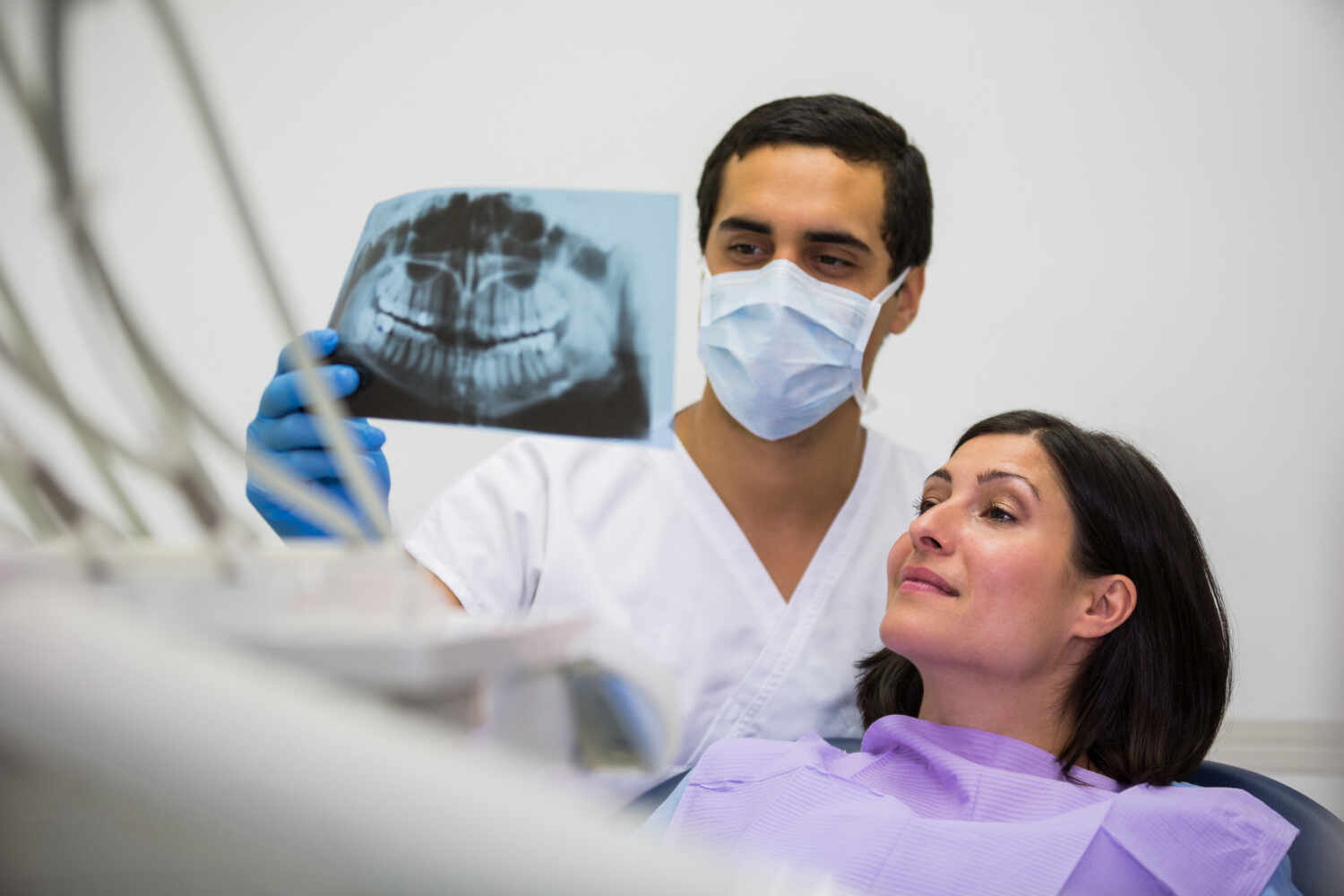
When it comes to dental health, X-rays play a crucial role in assessing the condition of our teeth. Healthy teeth X-ray reveals a gleaming picture, showcasing well-aligned and strong structures with no signs of decay or damage. On the other hand, an X-ray of unhealthy teeth reveals a variety of dental problems, including cavities, infections, misalignments, and even the presence of gum disease. Dental professionals may diagnose oral health issues quickly with the use of these X-ray images, ensuring that their patients have beautiful and healthy smile.
HEALTHY TEETH X-RAY
A healthy teeth X-ray image depicts a set of teeth that are in optimal condition, free from any significant oral health concerns. A trained dentist or radiologist can identify healthy teeth on an X-ray based on the following characteristics:
Proper Tooth Alignment:
In a healthy X-ray, teeth are aligned evenly and have a regular pattern. There are no visible signs of crowding, overlapping, or abnormal spacing between the teeth.
Intact Tooth Structure:
Healthy teeth exhibit a consistent density throughout the enamel, dentin, and pulp layers. The X-ray will show well-defined tooth structures without any signs of decay, fractures, or cavities.
Healthy Gum Tissue:
The gums surrounding healthy teeth appear pink and well-defined on the X-ray. There are no signs of gum disease, such as bone loss or receding gum lines.
Absence of Infections:
Healthy teeth X-rays do not reveal any abscesses, cysts, or tumors around the roots of the teeth. The surrounding bone appears normal, indicating the absence of infection or other pathological conditions.
UNHEALTHY TEETH X-RAY
On the other hand, an unhealthy teeth X-ray image unveils a range of dental problems that require immediate attention. These issues can include:
Dental Decay:
Unhealthy teeth X-rays may exhibit dark spots or areas of decreased density, indicating the presence of dental caries or cavities. Decay may be visible on the surface of the tooth or between teeth, highlighting the need for dental intervention.
Periodontal Disease:
X-rays can show periodontal disease symptoms such as bone loss and tartar buildup. These results indicate the presence of gum disease, and if it is not checked properly, it can result in tooth loss.
Abscesses:
X-rays can detect abscesses, which are pus-filled pockets brought on by bacterial infections. These appear as black spots at the dental roots or the crown, implying the need for extraction or root canal therapy.
Impacted Teeth:
X-rays can uncover impacted teeth, where teeth fail to erupt properly and remain trapped within the jawbone. This condition commonly affects wisdom teeth, leading to pain, infection, and potential damage to adjacent teeth.
Dental Trauma:
X-rays can reveal fractures or cracks in teeth caused by accidents or trauma. These fractures appear as lines or shadows. Immediate treatment is required to stop further damage or infection.
CONCLUSION
Dental X-rays are used to diagnose several oral health conditions. Healthy teeth X-ray demonstrates proper alignment, intact tooth structures, healthy gum tissue, and the absence of infections. Conversely, unhealthy teeth X-rays reveal dental decay, periodontal disease, abscesses, impacted teeth, and dental trauma. Understanding the differences between healthy and unhealthy teeth on an X-ray image empowers individuals to take proactive steps toward maintaining their oral health.




